Final project by: Ren Zheng, Aidan Uwe Zeissner, and Yuxi Chen
Intro
Plants at Georgia Tech are a huge component of the campus. The flowers in spring, trees covered with green leaves in summer, fallen leaves in fall, barren trees in winter together build the integrated life of living things on campus with students. Yet, oftentimes the beauty of all of these plants goes overlooked or is under-appreciated. This is the point of departure for this project, a means of establishing, or reestablishing, a connection between people and plants, as well as simply bringing a person’s attention towards the natural life around them. Through interacting with a singing plant, there may be a realization of nature’s active role in our lives and the similarities between humans and plants.

Our Idea
- Create a system that senses the conductivity of a plant, converting these changes into musical notes through Arduino board.
- We want to facilitate relationships between humans and plants by making students realize how plants, the campus important component that they have taken for granted, are living around them.
- The approaches would be creating music with people and plants, transforming people’s touch of the plant into the music notes and drum beats.
Idea Feasibility Test
We tested our original Arduino set with small plants, finding that people’s touch on plant will be detected with the help of Arduino’s CapacitiveSensor library. Whether the touch can be detected is determined by whether the plant is alive or not and the size of the plant.
Test 1 At Home
We connected the Arduino board to the small plant, finding that the touch on the plant will make buzzer play the scale. Buzzer will also play the scale when touching the plant with flowers and fresh leafs. However, It will not generate notes with dead leaf‘s touch.
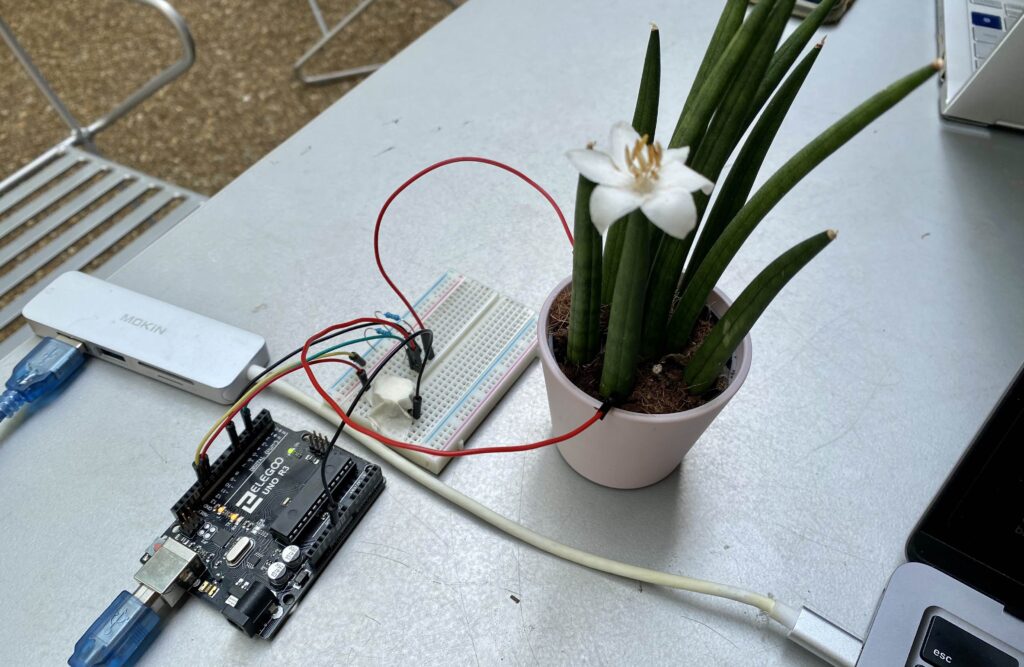
Test 2 On campus
We connected the Arduino board to the tree leaves and the ground small plant first. When touching the leaves on the tree and on the ground small plant, the buzzer will play the scale. If we connect the Arduino board to the ground branches, the scale will keep playing. However, If we connect the Arduino to a dead branch, no touch will work for the buzzer to play scale.
Test 1 and Test 2 together shows only living plants can interact with people’s touch. The musical output will then be a proof of lives around us.
Music Output
After proving our idea is feasible, we started the music output part and decided to divide the musical output into two parts.
1. drums beat: will play beats based on the rhythm people touch on the plant.
We originally want to use a synthesizer to produce drum beats, but in order to emphasize the connection between plant and human more, we decided to generate drum beat physically, by using servo motor to hit a box/ pot to produce drum beats.

2. buzzer rhythm: will play the notes based on people’s touch. The notes are from the background music of Zelda, which will bring people a sense of nature and freedom.

Schematics
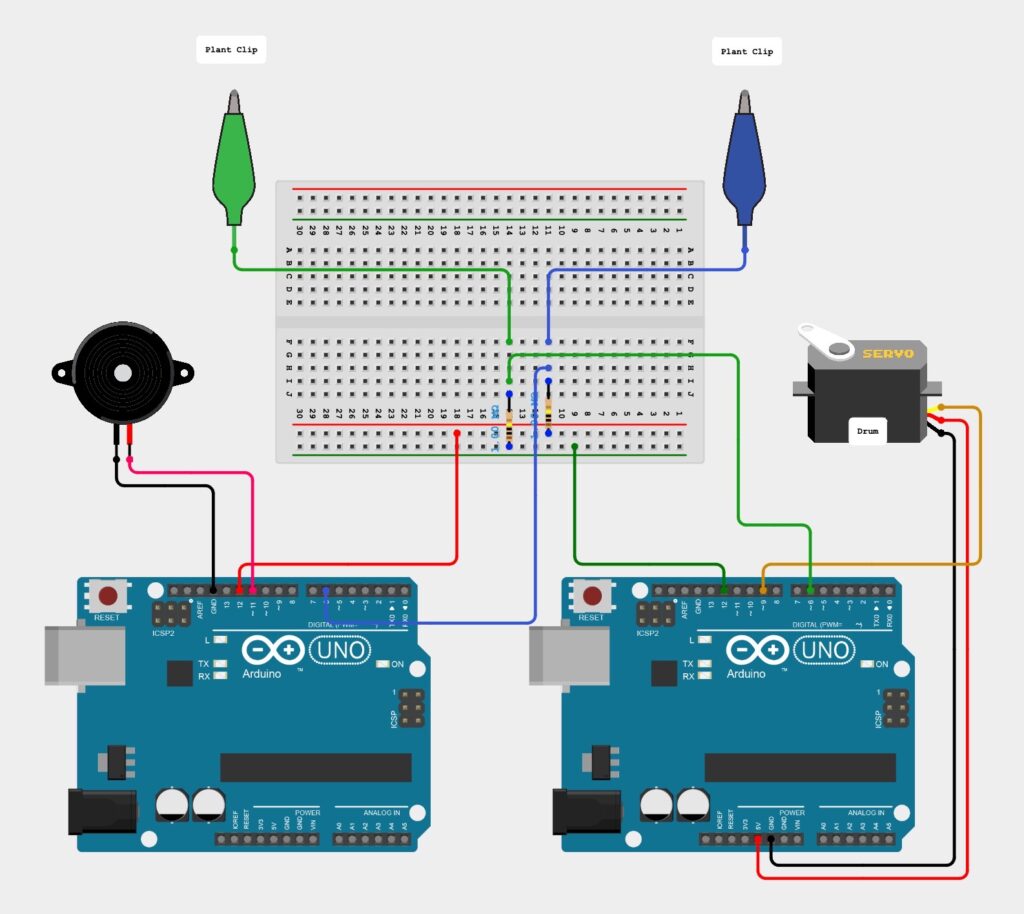
Code
1. drums beats
code for drum is here: https://drive.google.com/file/d/15lVgdOZ_w-u3VRnQDUwn9JK4-WMdtC_v/view?usp=share_link
There will be a cue for people to start touching the leaf. The system will test the frequency of people’s touch in 5 seconds and convert that touch into a fixed drum beats.
2. buzzer rhythm
code for buzzer is here: https://drive.google.com/file/d/1l81xBSXRhSfBE7Zdjf60vVa4kcjnq9DZ/view?usp=share_link
To sense the touch from people, we import the CapacitiveSensor library, which enables Arduino the measurement of capacitive sensors or switches using two digital pins of the microcontroller.
The library works by charging a capacitor through one of the digital pins and then discharging it through the other pin. The time required to charge and discharge the capacitor is measured and is proportional to the capacitance of the sensor or switch being measured.
The library provides a simple and easy-to-use interface for detecting touch or proximity sensing. It can be used to detect the presence of a conductive object such as a human finger or to create capacitive touch interfaces for various projects. In singing plant, it is used to create a touch interface on the plant’s leaves and detect the presence of plants.
Final Setup
We want our life detector to be as portable as possible so that it can be brought to anywhere on campus and detect life. We also want the life detector to fit in the environment. The hanging plant gave our inspiration for the final setup.

We decide to hide our Arduino board in the plant pot. The drum beat will be generated by beating the plant pot from inside. The music notes will be generated by buzzer from inside.
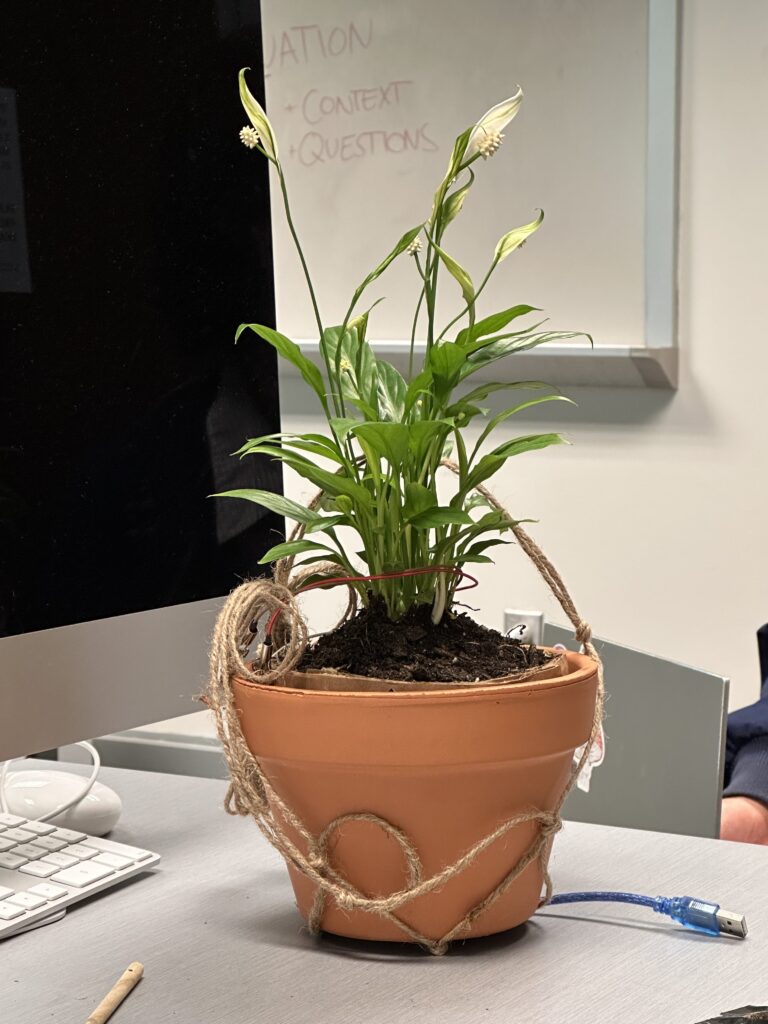
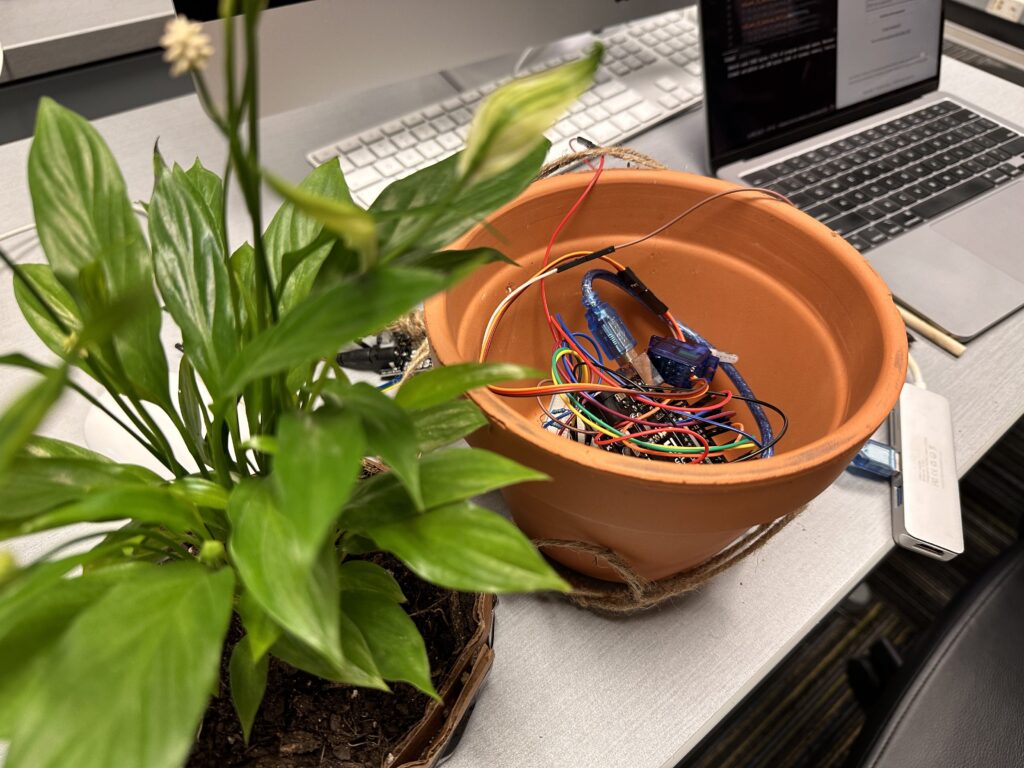
Video!!!
https://vimeo.com/821052723?share=copy
Problem Faced
Figuring out a way to run one section of the code for a specific amount of time
Initializing the drumbeat
Combining the buzzer and drum
- Buzzer and drum can only run one by one in the loop
- Solved this problem by using two Arduino boards for the buzzer and the drum to run separately
Powering the final product
- Used a power bank to power both buzzer and drum
- It is somehow connect the buzzer and the drum to the ground at the same time or interconnected, leading problems to buzzer and drum running dependently.
- Solved this problem by plugging drum and buzzer in order
Hope you find an interesting day with Sing!!
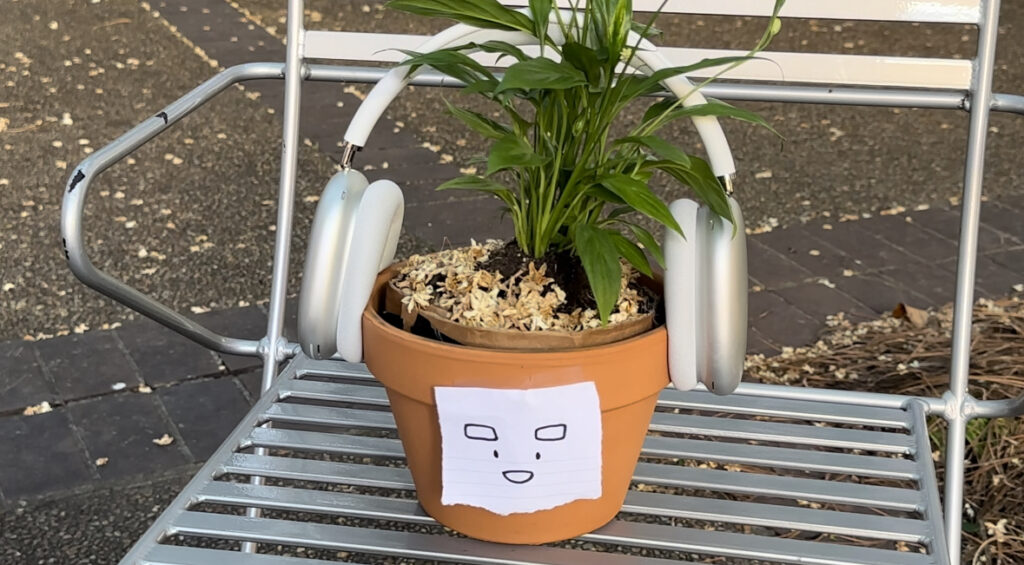
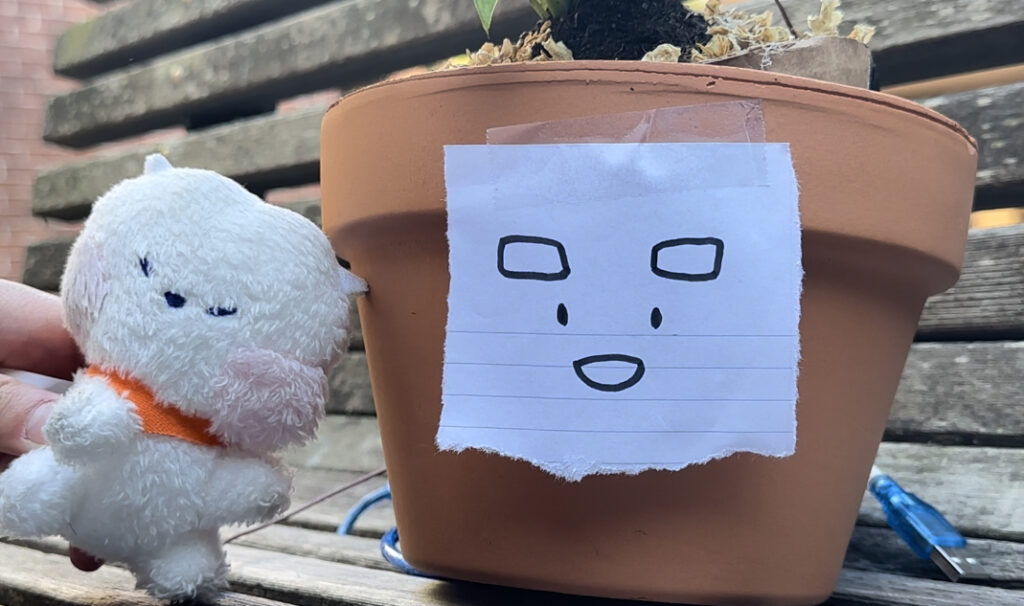

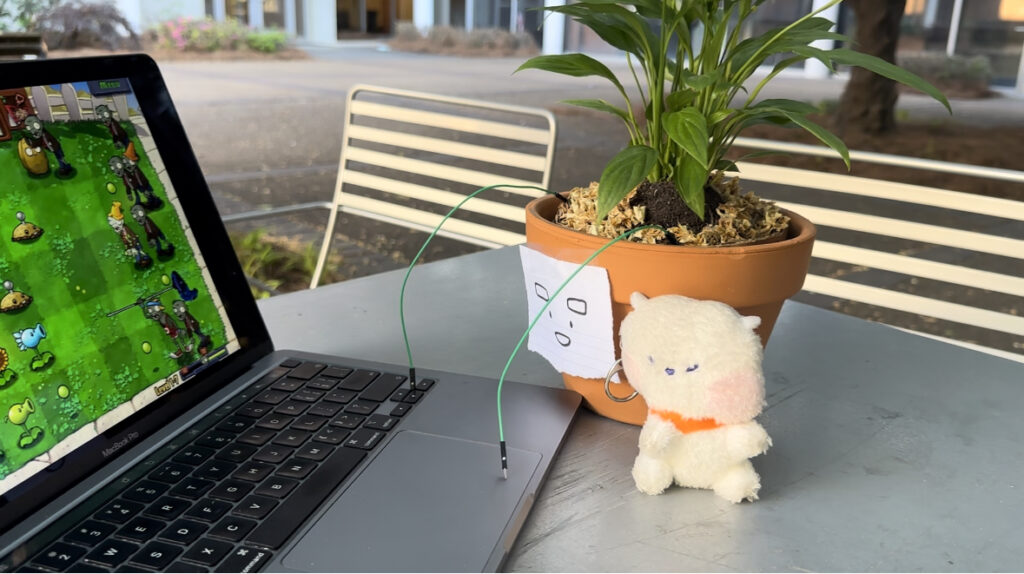
Leave a Reply